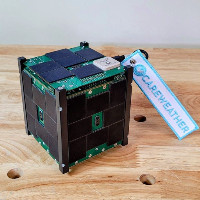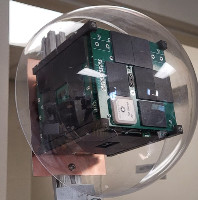| Satellite name | VEERY-0E “Ectobius” (Fledgling Veery, Veery v0.3-rc0) |
|---|---|
| Form factor | CubeSat |
| Units or mass | 1U |
| Status | Operational? (Website reports it as operational but object not identified and does not seem to be available to radio amateurs as of 2024-12-16) |
| Launched | 2024-03-04 |
| NORAD ID | 59114 ? |
| Deployer | EXOpod Nova 12U/16U [Exolaunch] |
| Launcher | Falcon 9 (Transporter-10) |
| Entity name | Care Weather |
| Institution | Company |
| Entity | Commercial |
| Headquarters | US |
| Oneliner |
Building phone—sized weather satellites to power a super accurate forecast. |
| Description |
Conduct on-orbit testing of custom satellite bus subsystems, which are crucial for the success of its future nanosatellite scatterometer, "Veery." The tests to be conducted during the mission include fully Earth-pointing control, radio data rate stress testing, and validation of the enhanced attitude determination and control system. Veery v0.3 will test some cool tech!
Moreover, the mission will feature the first orbital testing of Care Weather’s high-voltage radar power system, paving the way for future radar testing. The communications subsystem includes an Iridium 9603 satellite modem with a body-mounted patch antenna (not deployed), as well as an amateur radio payload, which will be discussed in more detail below, with deployed dipole antenna. The deployment mechanism subsystem has been updated with an electro-permanent magnet deployment system, replacing the servo-driven latch of Veery-FS1 for improved reliability. The attitude determination subsystem now features fine sun-sensors, an inertial measurement unit, and a magnetometer. The attitude control subsystem incorporates improvements for greater reliability in the 3-axis reaction wheels and magnetorquers |
| Results | |
| Sources | [1] [2] [3] [4] |
| Photo sources | [1] [2] |
| Keywords | Globalstar or Iridium or Inmarsat |
| On the same launch |
|
Last modified: 2024-12-16


